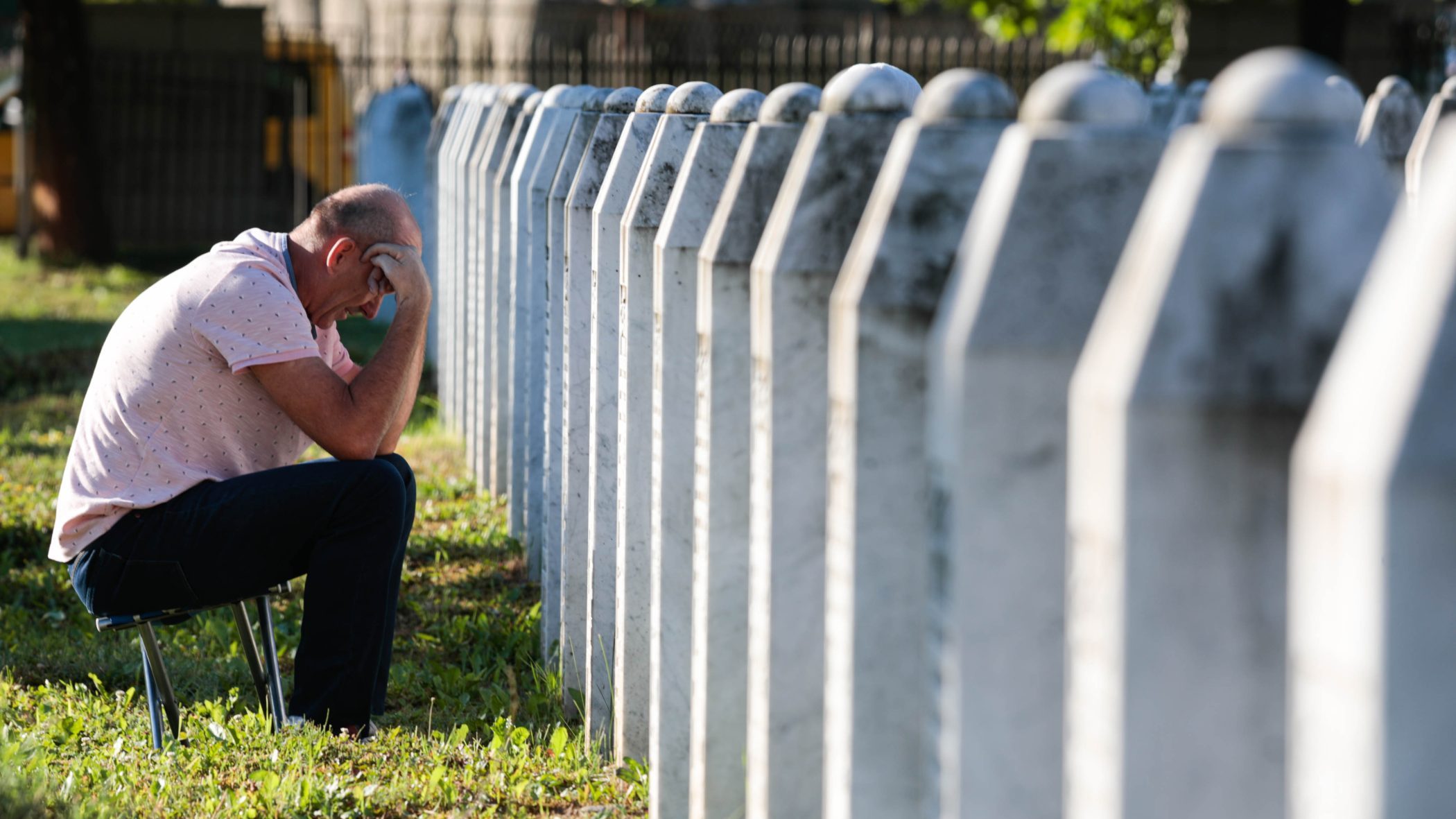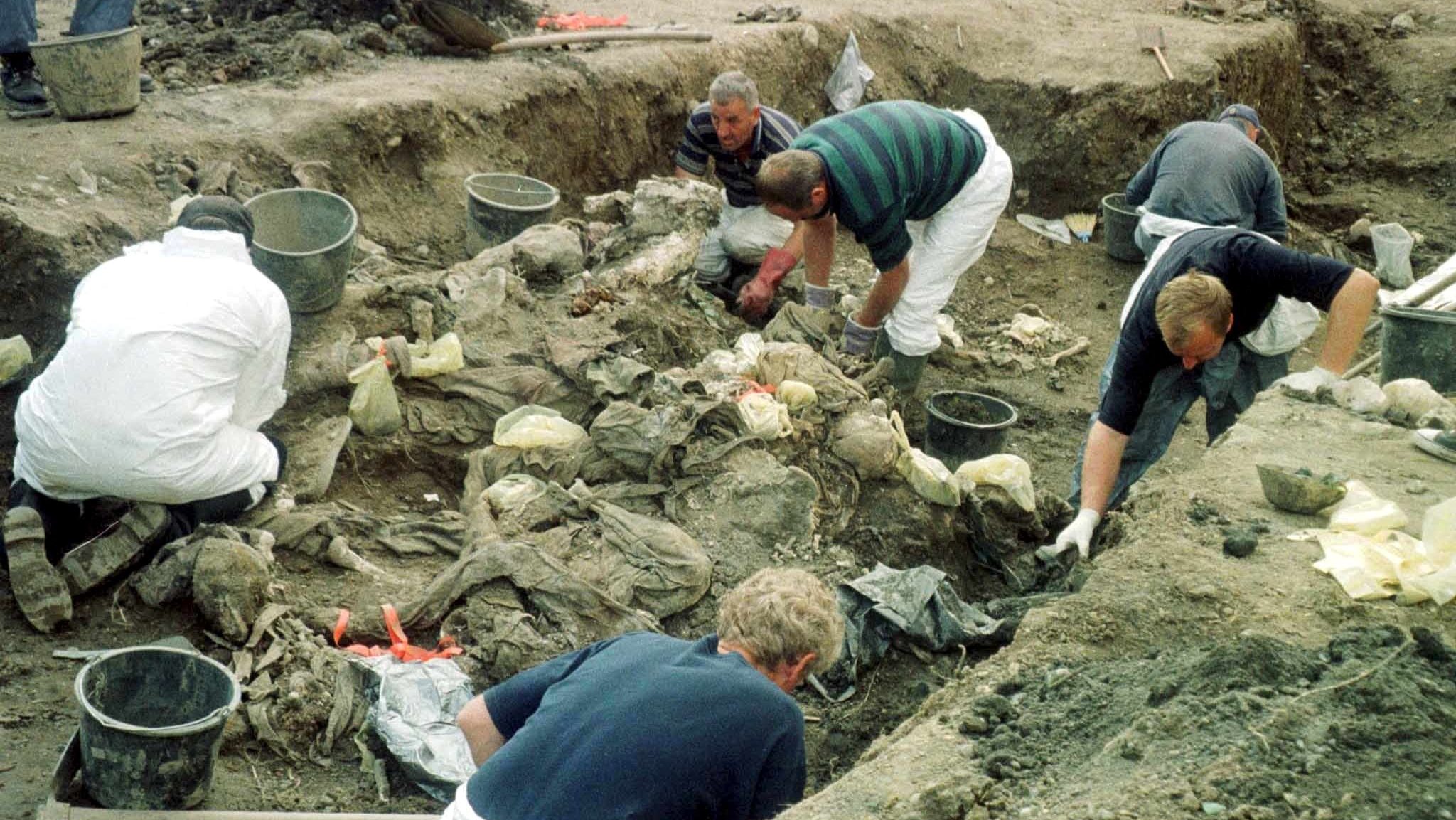This post is also available in: Bosnian
Almost all the Hague Tribunal’s prosecution evidence against Ratko Mladic has now been heard, with witnesses testifying that the former Bosnian Serb military chief must have known about war crimes.
Over the past year and a half, through the testimony of 164 witnesses, the Hague Tribunal’s prosecution has tried prove to that Mladic was responsible for genocide and other crimes committed during the war in Bosnia and Herzegovina.
There will only be a brief presentation of further prosecution evidence in March next year, about a recently-discovered mass grave in Tomasica.
“The last witness that the prosecution intended to call has finished his statement,” said Margriet Prins, an advisor to the prosecution.
But Mladic’s defence lawyers believe that “nothing new or spectacular was seen in courtroom”.
They insist that the prosecution based its case on stories that have been heard many times before from witnesses who have said similar things at other war crimes trials in recent years.
“It’s the end of the story, but we have not seen any material evidence of an order or an instruction from which it could be seen that Mladic ordered the commission of crimes. That was not expected, since people are smart enough to not to leave such orders on paper, but the prosecution did not bring any witness who directly said that Mladic ordered that people should be killed,” Miodrag Stojanovic, one of Mladic’s defense attorneys, told BIRN.
According to Stojanovic, the prosecution based its case on military experts who claimed that because the crimes committed were so massive, Mladic must have known about them, and on the testimonies of two “insiders” who were members of the Bosnian Serb Army.
Bosnian Serb troops ‘feared’ Mladic
The presentation of evidence was divided into phases which corresponded to segments in the indictment against Mladic.
In the first part, prosecutors tried to prove that Mladic was responsible for a campaign of terror against the citizens of Sarajevo; afterwards, witnesses spoke about the persecution of Bosniaks and Croats throughout Bosnia and Herzegovina, which reached the level of genocide in seven municipalities.
The third segment was the evidence about the genocide committed in Srebrenica, when the Bosnian Serb Army and interior ministry killed more than 7,000 Bosniaks, and evidence from former UN Protection Force members who the Bosnian Serb Army detained in 1995. The fifth segment saw military experts and others speak about the army’s command structure.
Dorothea Hanson, one of the first expert witnesses, said that in the spring of 1992, the Crisis Staff of the Serb Democratic Party (SDS) acted in “harmony” with the army which was under the command of Mladic to stage a violent takeover of power in municipalities across Bosnia and Herzegovina.
She illustrated her point with an intercepted tape of Mladic’s conversation with one Crisis Staff official from the municipality of Ilidza, during which Mladic ordered that they “put all military formations” under the army’s control.
“The conversation confirmed that Mladic had the control over the Crisis Staff and ordered them to engage in military operations… They had the same goals and worked together in order to achieve them,” said Hanson.
Military expert Richard Dannatt meanwhile said that Mladic was in direct charge of the army. He concluded that Mladic was “very involved in maintaining tight control over all that was happening”.
According to Dannatt, Mladic is a man of “strong character, which his men certainly respected, and to some extent, they feared him, and they certainly did what he ordered”.
A similar conclusion was presented by a military expert Reynaud Theunens, who said that the indictee was involved in field operations, leading combat operations. Based on army documents, Theunens concluded that Mladic was a “very active” commander.
“If he was not happy with the way his orders were implemented, Mladic immediately intervened. Instead of sitting in the Main Staff of the , Mladic moved in areas where there was fighting. He was actively leading combat operations,” Theunens said.
The Hague prosecution tried to use experts to trying to prove Mladic’s responsibility for genocide in Srebrenica, persecution across the country and spreading terror among the citizens of Sarajevo.
Expert Richard Butler said that the decision regarding the execution of civilian prisoners from Srebrenica citizens “had to be taken by Mladic”.
According to Butler, Mladic’s responsibility for the Srebrenica killings is proved by a map of the Bosnian Serb Army’s offensive, “Krivaja 1995”, which was approved by the commander.
On July 12, 1995, Mladic wrote on the map: “This was Serbian and it is Serbian now.”
Who shelled Sarajevo?
Prosecution witness Richard Higgs, expert on mortars, said that the shells that killed and injured hundreds of civilians in Sarajevo during the siege of the city were fired from the Serb side.
According to Higgs, in both incidents when civilians were killed at the Markale market in Sarajevo, the shells were fired from Serb positions.
Jeremy Bowen, the BBC’s correspondent in Sarajevo during the war, testified that the Bosnian Serb Army treated civilians “not only as a legitimate target but also as the main enemy”. Bowen said that civilians in Sarajevo were exposed to terror “by a campaign of shelling and sniping from the Bosnian Serb Army”.
“There was no place where you could not be struck by a shell, and there were many places where you could have been hit by a sniper. You could not feel safe anywhere in the city – until the end of the war,” said Bowen.
During the presentation of evidence about Sarajevo, the Hague prosecution put on the stand dozens of former UN officials who were in the city during the war, and they confirmed that the population was exposed to a daily shelling campaign.
Anthony Banberry, who was member of UN peacekeeping forces from April 1994 to May 1995, testified that the Bosnian Serb Army “was constantly shelling and attacking civilians in Sarajevo with snipers”.
“Through the attacks, and by limiting the delivery of humanitarian aid to Sarajevo, they physically and psychologically terrorised civilians,” said Banberry, adding that Mladic had firm control over his forces.
One of the most interesting testimonies was from general Manojlo Milovanovic, who was Mladic’s deputy and his right-hand man, who said that before the war, Mladic had warned the political leadership of Republika Srpska that its proclaimed war goals would represent “genocide”.
Milovanovic said that in May in 1992, the Republika Srpska parliament – at the meeting during which the Bosnian Serb Army was formed and Mladic appointed its commander – opted for war.
Quoting Mladic’s words at the time, he said: “We cannot cleanse, nor can we have a sieve to sift so that only Serbs will remain… and that the others would go… I do not know how Mr. Karadzic would explain that to the world. People, that is genocide.”
The prosecution also called dozens of witnesses who spoke about mass atrocities by Serb forces under Mladic’s control in more than 20 municipalities in Bosnia and Herzegovina. Some of the most moving testimonies were about mass killings in Krajina area and rapes in eastern Bosnia in 1992.
Eyewitnesses to mass murder
Witness Safet Taci described how in 1992, he saw the execution of about 150 detainees at the Keraterm detention camp near Prijedor, after Serb soldiers pointed a machine gun at a room full of men from the village of Hambarine.
“Cries for air could be heard from the room, they were banging on the door trying to open it. Most likely, they broke open the door to get some air. When they broke it, Serb soldiers opened fire on them,” he said.
Witness Ivo Atlija testified that during the attack on the village of Brisevo in July in 1992, the Bosnian Serb Army killed 68 Croat civilians, among them his father and 14 women, while Rajif Begic described how in May 1992, he survived the murders of about 20 men, among whom were his brother and cousins, on the bridge over the river Sana in the village of Vrhpolje.
During the presentation of evidence in relation to Srebrenica, the prosecution called several witnesses who survived the mass killings of Bosniaks.
Protected witness RM-249 said that on July 11, 1995, the day when Srebrenica fell, he sought refuge with his family near the UN peacekeepers’ base in nearby Potocari, together with thousands of inhabitants of the enclave. The Bosnian Serb Army took him out of the bus he was travelling on and drove him to a place called Rasica Gaj, together with other Bosniaks, where they tried to kill them.
“The truck stops… Already, they had killed three men while I was still sitting on the truck – knocking them down off the truck, they shot them in bursts. Two men from the bench where I was sitting were trying to run away, and they ran away ten metres from the truck, and they were hit by the bursts of fire,” the witness said, adding that he then jumped off the truck and ran down a slope and thus managed to save himself.
Mladic’s ominous hand gesture
Witness Momir Nikolic gave crucial testimony about Mladic’s knowledge of what would happen to the people of Srebrenica.
He said that two days after the fall of Srebrenica, Mladic responded to a question about the fate of captured Bosniaks from Srebrenica by making a curt hand gesture, from it could be concluded that they would be killed.
“Mladic spoke to the detainees and told them not to worry and that everything would be fine and that they would be taken to where they wanted. When he went to the car, I went to him and asked him what would really happen to these people. Even then, I did not believe that they would go where they wanted. Mladic smiled, said nothing, but he made a gesture with his hand from left to right and left,” said Nikolic.
At the end of his testimony, Nikolic apologised to “all the victims”.
In 2003, Nikolic, who was a security officer with the Bratunac Brigade of the Bosnian Serb Army, pleaded guilty at the Hague Tribunal to the persecution of Bosniaks from Srebrenica and was sentenced to 20 years in prison.
Former Bosnian Serb Army officer Srecko Acimovic meanwhile testified that in July 1995, he twice refused an order to execute Bosniaks from Srebrenica who were detained in the school in the village of Rocevici in the Zvornik municipality.
Acimovic, who was then the commander of the Zvornik Brigade, said that he received the written order for the execution from the brigade’s command, and he guessed that it came from the army’s Main Staff.
The prosecution also called several former UN peacekeepers, who confirmed that Bosnian Serb forces captured them in 1995 and tied them up in strategic locations in order to prevent NATO bombing.
The prosecution’s evidence presentation was sometimes interrupted by discussions about Mladic’s health.
Several breaks in the trial were approved so that Mladic could recover from minor operations, and because of his health, the number of sessions per week was reduced from five to four.
Mladic himself thanked the Tribunal and its medical personnel, saying that they “saved my life and pulled me from the grave”.
His lawyer Stojanovic warned however that the pace of the trial is debilitating for his client.
“Mladic’s condition is very bad… we hired a medical team from Russia who will do the research ,” he said.
The defence’s evidence is due to begin in May next year and, Stojanovic said, it will last about a year, during which some 150 witnesses will be called to testify.

